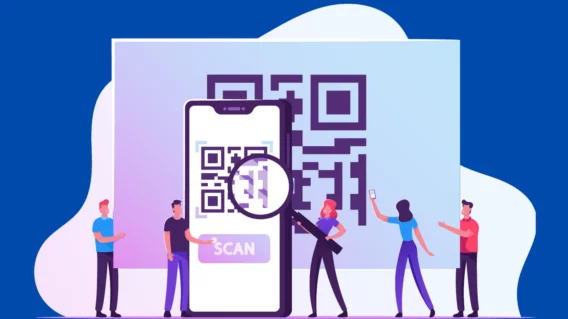The Art of Deception: Unmasking Social Engineering Attacks

Nowadays, threats to our digital information aren’t limited to viruses or software vulnerabilities. There’s an age-old tactic that hackers employ, relying on human psychology to exploit vulnerabilities. Social engineering attacks are a deceptive way for cybercriminals to manipulate individuals into divulging confidential information.
What is a Social Engineering Attack?
A social engineering attack is a method used by cybercriminals that doesn’t focus on cracking passwords or exploiting software. Instead, it targets the most unpredictable element of cybersecurity: human beings. By manipulating individuals into revealing sensitive information or performing certain actions, attackers bypass the need for more complex hacking methods.
This technique exploits the natural tendency of humans to trust. When trust is gained, it becomes simpler for a hacker to insert themselves into a conversation or process, without raising alarms. They prey on emotions, human error, and the innate desire to help or be of service.
How Do Social Engineering Attacks Work?
Cybersecurity isn’t just about firewalls and antivirus programs; it extends deep into the psyche of human behavior. At its most fundamental level, social engineering is a psychological warfare waged against unsuspecting individuals, luring them into traps artfully disguised as legitimate interactions.
The Intricate Web of Human Manipulation
These manipulations are crafted with precision, tapping into human responses of empathy, curiosity, or concern. The attacker choreographs each step, leading their target to provide confidential information and/or perform certain actions that benefit the attacker and give them access.
Why Hackers Choose Social Engineering
Hackers often resort to social engineering for a multitude of reasons. For one, breaching a system’s defenses directly can be time-consuming and fraught with technical challenges. By targeting the human element, hackers can bypass many of these digital roadblocks, accessing systems indirectly through the compromised actions of a user.
In many cases, duping a single individual can provide easier and quicker access to a wealth of information than trying to break through layers of digital security. This method is particularly effective because when humans are subjected to heightened emotions like fear, urgency, or compassion, they are more prone to overlooking red flags or disregarding safety protocols.
Delving into the mechanics of social engineering reveals a range of sophisticated tactics, each designed to exploit human tendencies:
Impersonation
Here, attackers don a digital disguise, emulating someone the victim knows and trusts. This could be a coworker, a bank representative, or even a family member. The aim is to lower the victim’s guard, making them more receptive to requests or instructions.
Information Gathering
This is a preliminary step where attackers conduct thorough research about their target. By scouring social media, corporate websites, or other public platforms, they assemble pieces of information, weaving them into a compelling and believable narrative for their impending attack.
Exploitation of Human Desires
Often, victims are ensnared by offers that prey on their desires or fears. From the allure of a massive discount to the threat of a compromised account, attackers dangle bait that seems irresistible, banking on the victim’s impulsive, emotional response.
Through these methods and more, social engineering attacks prove that sometimes the weakest link in cybersecurity isn’t code or hardware, it’s human psychology.
Types of Social Engineering Attacks
Cyber criminals employ an array of techniques to deceive unsuspecting individuals and businesses. Social engineering attacks, with their unique blend of psychological manipulation and technical deceit, are particularly dangerous.
By understanding the various types of these attacks, businesses can better arm themselves against such threats and create a robust line of defense.
Phishing
Phishing is one of the most prevalent forms of social engineering, largely due to its effectiveness. These attacks typically involve sending seemingly legitimate emails designed to resemble communications from trusted entities, such as banks or service providers. Recipients are often prompted to click on a link, which might lead to a fraudulent site asking for personal or financial information.
In other instances, the link may trigger the download of malicious software. With the increasing sophistication of these scams, it’s crucial for individuals to scrutinize unsolicited emails, even if they seem to originate from known sources.
Pretexting
Pretexting is essentially a fabricated story or situation intending to manipulate someone into revealing confidential information. Attackers, playing a specific role like an IT support person, HR representative, or even a fellow colleague, weave intricate narratives to seem credible.
By generating trust and exploiting human tendencies to assist or comply, they extract sensitive details that can later be used for malicious purposes. Vigilance, education, and clear protocols for verifying identities can help thwart such deceitful attempts.
Quid Pro Quo
The quid pro quo tactic is reminiscent of the age-old barter system, but in this case, what’s being traded could be your security. Cybercriminals, often posing as tech support, might offer services like software upgrades or system checks. They try to scam people into purchasing a system support or software package. Users should be cautious of unsolicited offers, always verifying the identity of anyone offering assistance, especially onlin
Spear Phishing
A more targeted form of its counterpart, spear phishing narrows its focus on particular individuals or organizations. Armed with specific details about the target, gleaned from thorough research or previous data breaches, attackers customize their deceptive messages.
This added layer of personalization makes spear phishing remarkably convincing. Businesses need to be particularly wary, educating their staff about such risks and emphasizing the importance of double-checking any unusual or unexpected requests.
Tailgating
Stepping beyond the digital realm, tailgating exploits human politeness and distraction. It involves unauthorized individuals physically following authorized personnel into secure locations. Whether it’s an office, data center, or any restricted facility, once inside, these intruders can access information, plant devices, or conduct surveillance.
Companies must instill a strong security culture, reminding staff not to hold doors open for strangers and to always wear and check identification.
Baiting
As the name suggests, baiting is when the hacker dangles something enticing to lure its victims. Typically, it promises users something appealing, like free software, movie downloads, or exclusive content.
However, when the user bites, they find that they’ve inadvertently introduced malware into their system or shared confidential details. To combat this, users should be educated on the dangers of downloading from unverified sources and as the saying goes, ‘if something seems too good to be true, it probably is.’
How to Prevent Social Engineering Attacks
While advanced technical measures have been developed to guard against traditional cyber threats, social engineering, with its focus on exploiting human behavior, remains a formidable challenge. Prevention, in this context, requires a blend of education, verification, and technology.
Educate and Train Staff
Empowering your team through knowledge and training is one of the most effective deterrents against social engineering attacks. Regular workshops, training sessions, and simulations can help employees identify and handle potential threats. Real-world examples, discussions on the latest attack methods, and practical exercises can significantly reduce the risk of staff members inadvertently acting as a gateway for attackers.
Double-check Information
With digital communication more prevalent than ever, it’s easy to take every email, call, or message at face value. However, skepticism is always useful with rising social engineering attacks. Before acting on any sensitive requests, it’s crucial to verify their authenticity through alternative communication channels.
For instance, if you receive an email from the CEO requesting urgent fund transfers, a quick phone call can confirm its legitimacy. By integrating such verification steps into standard operational procedures, organizations can effectively stymie many social engineering attempts.
Implement Multi-Factor Authentication
Utilizing Multi-Factor Authentication (MFA) is like adding additional locks to your digital door. Even if an attacker obtains a user’s credentials through deception, MFA requires additional verification steps, like a one-time code sent to a phone or biometric verification, to gain access. Phishing-resistant MFA is recommended above all other password security measures, as it provides a fortified defense against cyber threats like keystroke logging, password phishing sites, and human errors. Learn more about Phishing-resistant MFA in this password security blog [hyperlink].
This multi-layer approach provides a safety net, ensuring that stolen passwords or credentials alone aren’t enough for hackers to breach systems. In the fight against social engineering, MFA acts as a robust deterrent, complicating the attacker’s path and significantly lowering breach risks.
Use Antivirus Solutions
The digital realm is a battlefield, and antivirus solutions are the shields we wield. Emsisoft, in its commitment to safeguarding businesses, offers a suite of comprehensive cybersecurity tools tailored to counteract a multitude of threats. Emsisoft employs a layered approach with malware scanning and browser security, which immediately blocks access to malicious websites attempting to obtain credentials. This means that your users will not be able to access malicious websites like the links from phishing emails.
By actively scanning for and neutralizing malicious software, monitoring suspicious activities, and ensuring real-time protection, Emsisoft guards businesses against both known and emerging threats.
The evolving landscape of cyber threats demands a proactive approach. Combining awareness, vigilance, and the right tools, businesses can navigate this digital minefield with confidence. Remember, protecting against social engineering attacks is as much about understanding human behavior as it is about deploying technical defenses.
With a well-rounded strategy in place, organizations can not only withstand these deceptive onslaughts but also foster a culture where security becomes second nature.
Social Engineering Attacks: FAQs
What is an example of a social engineering attack?
One common example is phishing, where an attacker sends a fraudulent email pretending to be from a trusted source, like a bank or popular website, to trick recipients into sharing sensitive information or downloading malware. Another example is pretexting, where the attacker might call posing as IT support, asking an employee to provide login details for “system updates.”
Why are social engineering attacks so effective?
Social engineering attacks target the human element of security, leveraging psychological manipulation. By playing on emotions such as fear, urgency, or trust, attackers can often bypass digital security measures. People are often
preoccupied and might not always question the legitimacy of a request, making these attacks highly effective.
How do social engineering hackers gather information?
Hackers often employ various techniques to gather data. They might use open-source intelligence (OSINT) to gather information from social media, corporate websites, or public databases. Dumpster diving, where hackers sift through trash to find discarded documents or hardware, is another method. They can also employ pretexting or phishing to extract information directly from the target.
How can businesses protect themselves from spear phishing?
Businesses can combat spear phishing by educating employees on the tactics hackers use, encouraging them to be skeptical of unsolicited requests, especially those asking for sensitive information. Implementing strong email filtering solutions, keeping software updated, and using two-factor authentication can further reduce the risk of successful spear phishing.
What’s the difference between phishing and spear phishing?
Phishing is a broad attempt where attackers send fraudulent messages to a large group of people, hoping that a few will fall for the trap. Spear phishing, on the other hand, is highly targeted. Attackers tailor their fraudulent messages to specific individuals or organizations, often using inside information to make their attack more convincing.
How do social engineering baiting attacks work?
Baiting attacks lure victims by offering something enticing, often a free download of popular software, music, or movies. Once the user downloads or interacts with the bait, malicious software is installed on their system, granting the attacker access or compromising the user’s data.
Are there physical forms of social engineering attacks?
Yes, not all social engineering attacks are digital. Tailgating, for instance, is a physical method where attackers gain access to restricted areas by following an authorized person into a building. Similarly, shoulder surfing involves watching someone type in a password or PIN, capturing their credentials.
Can antivirus software protect against social engineering attacks?
Antivirus software can offer some protection against the malicious payloads often associated with social engineering attacks, such as malware downloads. However, the best defense against social engineering is awareness and education. Tools like Emsisoft can protect systems from malicious software, but users must still be cautious and informed to prevent falling for manipulative tactics.
Conclusion
Emsisoft Enterprise Security + EDR
Robust and proven endpoint security solution for organizations of all sizes. Start free trialIn the evolving landscape of cybersecurity, threats like social engineering attacks are increasingly prevalent. But with vigilance, education, and strong security protocols like those provided by Emsisoft, businesses can protect themselves against these attacks.


